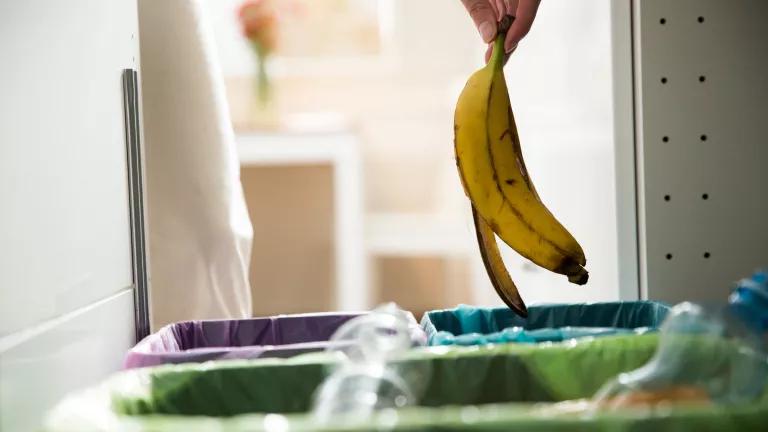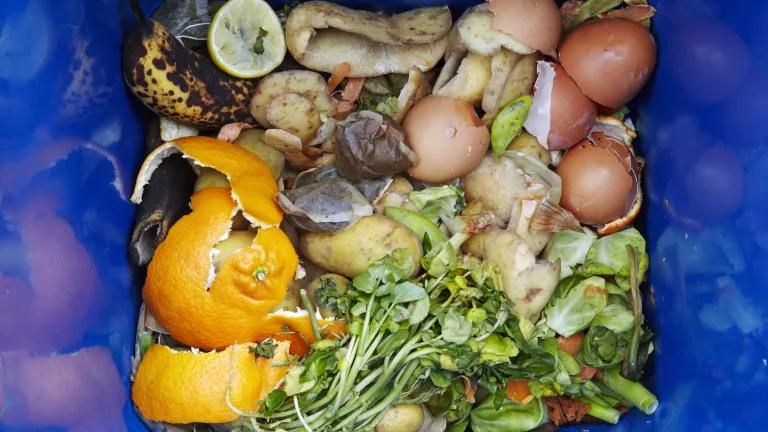Now Is the Time to Harness the Power of SNAP

In crafting its initial response to the COVID-19 pandemic, Congress missed a huge opportunity to help the most vulnerable families and lift the economy at the same time: increasing benefits through the Supplemental Nutrition Assistance Program, or SNAP, so more families can buy groceries. As this health crisis has unfolded, food has been top of with mind, with families sheltering at home, restaurants closed and supermarket shelves empty. Good nutrition is also critical to keeping people healthy and their immune systems strong. And when families have more money to purchase food, it creates a ripple economic stimulus effect, supporting the entire food chain, from farm to fridge—a food chain that employs one in six American workers.
Increasing SNAP benefits in the next federal relief package is our best opportunity to ensure that all families have food on their tables throughout this pandemic. It is also among the most powerful stimulus levers available to boost the economy, preserve and create jobs, and set the nation up for long-term recovery.
The Case for Investing in SNAP
SNAP is one of the nation’s most effective programs. USDA data show that in fiscal year 2018, SNAP served an average 40.3 million people per month and issued $60.9 billion in benefits. In 2011, SNAP brought nearly five million Americans above the poverty line, including more than two million children, according to the Center on Budget and Policy Priorities. These same families are among the most vulnerable during the current crisis. And many more families will need to turn to SNAP as a result of job and income loss due to COVID-19.
Furthermore, SNAP is a proven and powerful economic stimulus. The low-income families that receive SNAP benefits quickly spend them, and that spending multiplies as it moves through the economy. A 2019 analysis by USDA’s Economic Research Service found that during a slowing economy, $1 billion in new SNAP benefits would increase GDP by $1.54 billion and support 13,560 additional jobs, including nearly 500 agricultural jobs.
The first stimulus package made a promising start on SNAP response, including flexibility in work requirements, time limits and administrative rules, as well as allowing states to provide emergency SNAP allotments.
But more must be done.
More than 130 house members recently signed a letter requesting additional legislation to institute a 15% percent increase in the maximum SNAP benefit and increase the monthly minimum SNAP benefit from $16 to $30. We fully agree with this request. The next relief package should also expand the spending flexibility of SNAP so that families can purchase food online and more easily access fresh fruits and vegetables by purchasing directly from small farmers. And it should provide additional administrative resources to states and counties to meet increased demand and adapt to changes in these programs.
What the First Relief Packages Got Right
Congress has taken some important steps to address access to food during this crisis. The Families First Coronavirus Response Act of 2020 and the Coronavirus Aid, Relief, and Economic Security (CARES) Act – the massive stimulus bills recently enacted – provide important increases to funding for emergency food and child nutrition programs, give needed flexibility to states in implementing SNAP and provided for emergency SNAP allotments related to the crisis.
More than 37 million people in the United States struggle with hunger, and that number will likely swell as a result of COVID-19. As the Washington Post has described, food pantries across the country are experiencing a surge of need, with cars lined up for miles to get bags of groceries. Meanwhile, with unemployment skyrocketing, more families find themselves in need of emergency food. The CARES Act provides an additional $450 Million in funding for TEFAP (The Emergency Food Assistance Program) and FDPIR (the Food Distribution Program on Indian Reservations). Both programs provide critical and effective national aid for local emergency food distribution. USDA should continue to be responsive to local programs’ need for funding and flexibility as this crisis continues.
The National School Lunch Program provides lunches to more than 30 million students each day, and more than 12 million rely on schools for breakfast as well. With schools closed, local school systems are working to serve their communities by offering lunches to go. The CARES Act adds $8.8 Million in funding for Child Nutrition Programs so that schools can pivot to respond to coronavirus. USDA waivers allowing greater flexibility on when schools serve meals, who can pick up food, and administrative deadlines have been critical as well.
More to Be Done
As the nation rallies to address the COVID-19 crisis, we must use all the tools at our disposal to ensure that every family has sufficient food and the food system remains strong. By putting more money into SNAP, the next relief package passed by Congress can use a critical lever that will help keep more people working and fed.





